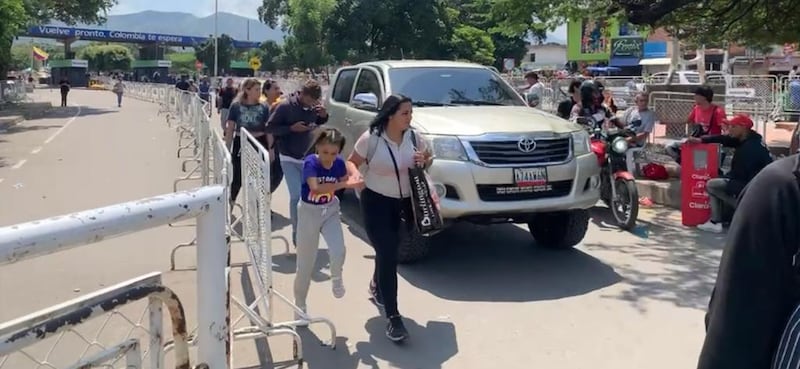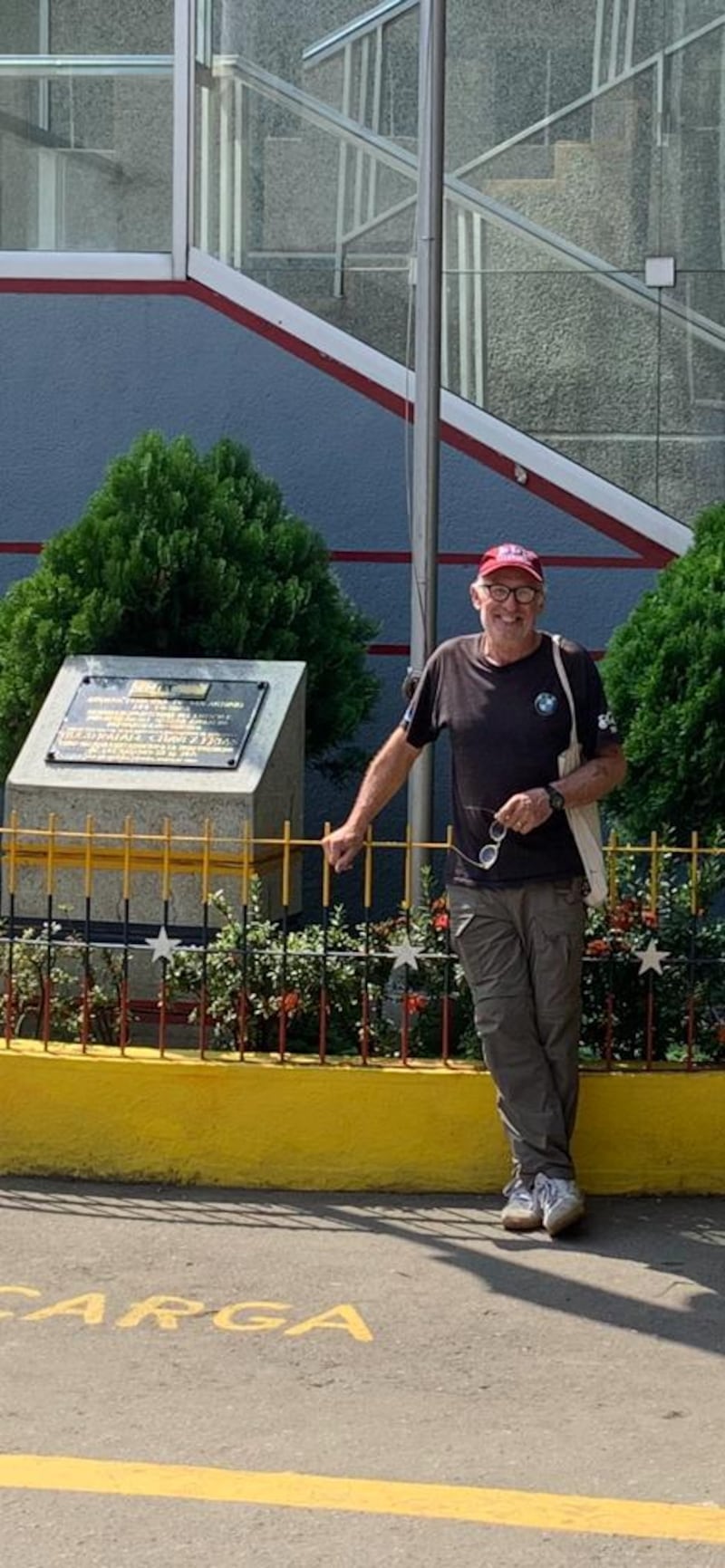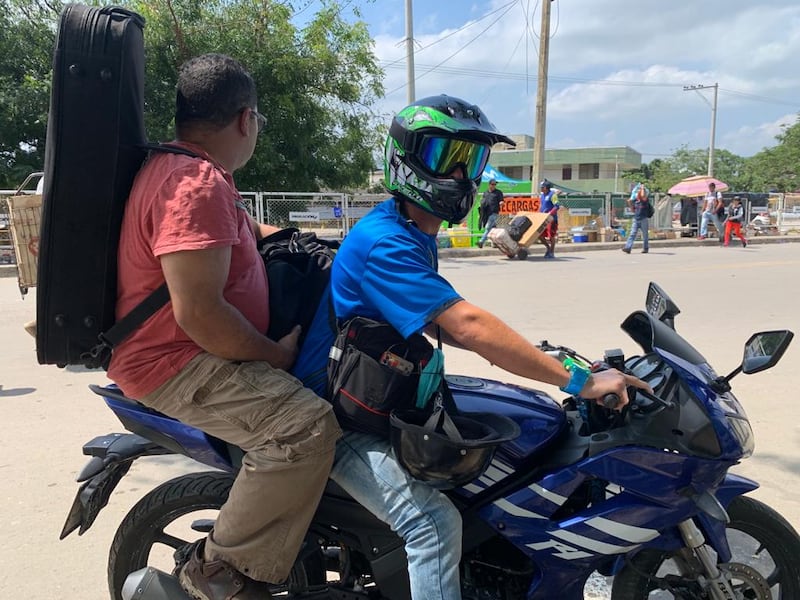More than seven million Venezuelans have fled their homeland in recent years. For a country of 30 million people, that’s close to a quarter of the population upping sticks and getting out. In effect, Venezuela is bleeding people, mostly into neighbouring nations and the Caribbean but also further afield – to Spain, for instance, for obvious linguistic and other cultural reasons.
It started in 2010 when the then government of Hugo Chávez declared an “economic war” because of various shortages. In the face of fiscal meltdown, the government maintained a high level of spending –mismanagement that has continued apace under Chávez’s successor, Nicolás Maduro.
The country has one of the most substantial reserves of oil in the world, right up there with Saudi Arabia. In fact, according to BP, it has slightly more than the Saudis – 304 billion barrels against the Gulf state’s paltry 298 billion barrels. But who knows for sure because Venezuela has mismanaged itself spectacularly for years and official figures are somewhat meaningless? For instance, in 2018, inflation peaked at 16,374 per cent, falling back to the more manageable current rate of just 195 per cent, according to Statista, the German-based consumer data company. And we think we have problems...
When I began my journey through the Americas, I first encountered Venezuelans in the far, far south – in Punta Arenas in Chile and El Calafate in Argentina, only marginally less far south. In both instances, they were working in hospitality, just like thousands of Irish who work abroad, though prompted to leave for reasons rather less extreme than those facing Venezuelans.
RM Block
In snatched conversations in cafes or restaurants, most seemed stoical enough. It’s just the way it is, was a common refrain, and they simply got on with life as best they could. But one can only guess at the emotional bruising beneath the surface.

Many, perhaps most, leave the country by heading west into Colombia with which Venezuela shares a 2,220km long border and several official crossing points. One of the largest – the San Antonio crossing – is just outside Cúcuta, a city of more than 700,000 people in Colombia’s north central region. The actual frontier is in the middle of a long concrete bridge, the Simon Bolivar Bridge, over the river Tachira but you can walk across it without anyone checking anything. All that is done on the Venezuelan side. And it’s all rather shambolic.
I wandered well inside Venezuela, maybe a kilometre or so, and was taking photos of the constant flow of people, almost all of them in one direction (into Colombia), when a Venezuelan customs official intervened. What was I doing, etc, etc? I explained that I was a tourist and a journalist and wanted a few photos. Oh no, that isn’t allowed, he said firmly but in a friendly enough manner. He asked for my phone. I gave it to him and he directed me to stand to one side. A bit left, he indicated, yes there. And he took my picture for me, in front of a Venezuelan flag, and handed me back my phone.

The stream of people leaving didn’t ease up, at least not in the few hours I was there. It was a Sunday and therefore difficult to divine exactly why everyone was making the journey, which most were doing on foot. There were family groups, a father, mother and some children, groups of teenagers and young adults, all mobile phones and chatter, some single young men and some quite elderly people too. But no one thing appeared to define them, at least not to me, something that would indicate fleeing, or escaping, from something awful.
Many had no bags or suitcases and appeared merely to be crossing from San Antonio (the town on the Venezuelan side) to Villa Rosario (on the Colombian side), perhaps to shop, meet friends or simply have a day out, as it were. But some, maybe a third, did have suitcases and looked to be making a more significant journey.
The Venezuelan checks were random, to put it mildly. The road on the Venezuelan side was wide and laid out a bit like a roadway toll crossing – several channels through which vehicles might be funnelled. But there was no systematic checking. Every now and then, a Venezuelan policeman would step into the road and stop a vehicle heading into Colombia (almost invariably a taxi) and check the passengers and the boot.
“La economia,” he said, a catch-all explanation as to why, aged 46, he was leaving behind his wife and two children, aged 10 and 12
— Violin Man
At the side of the road, the police had a little desk set up in what looked like a garden gazebo. Every now and then, one of the crossers would be directed to the desk and asked for ID. I hung around there for a while and eventually got talking to a middle-aged man who had walked across from Venezuela with a younger companion. The man was wearing cargo-style trousers, a pink shirt and had a small black, what looked like a weekend break, bag. He also had another black case slung on his back – a violin case.
He was heading for Lima (the capital of Peru) he said because life in Venezuela was so difficult. Food, petrol, all services had become too expensive. He refers to the cost of a bottle of water which he said was three times more expensive in Venezuela than in Colombia. “La economia,” he said, a catch-all explanation as to why, aged 46, he was leaving behind his wife and two children, aged 10 and 12.
The police started taking an interest in us. Who was I, asked one. I said who I was and showed him my press card and passport, which was not stamped for entering Venezuela. I’m not entering, I said, I’m just hanging around talking to people. Come with me, the policeman indicated, and into the gazebo we went. He wanted to know much more about me and so I told him and, after a while, he took out his own phone and began showing me photos of his Suzuki 600 racer, his pride and joy. We did selfies.
Eventually, all three of us were let go without any fuss. I walked on ahead of Violin Man, fearing I might be causing him anxiety. But we met again on the Colombian side of the Simon Bolivar Bridge, where the activity was frenetic. Fellows on motorbikes, others with taxis, would light on anyone who looked like they might need transport. Taxis coming to the border from the Colombian side were equally lit upon, by runners offering to carry bags for the occupants. Hawkers flogged drink, food, phone chargers, clothes, anything you can think of. It is all very colourful and crazy at the same time.

I’m not really going to Lima, Violin Man said to me, but he didn’t want to get into further detail. He said life back home was a total disaster and it was getting worse by the day. Another man approached Violin Man – we agreed I would refer to him as Juan in anything I wrote but I prefer Violin Man – and directed him to join some others, eight or 10 maybe, clustered together, waiting at the end of the bridge. His companion, meanwhile, had gone off elsewhere. After a little while, a fellow on a motorbike came and Violin Man got on to the back of it with him. He allowed me take his picture, with him turning his face away from the camera. And then he was gone.
Seven million plus one.
Peter Murtagh is travelling by motorbike from Tierra del Fuego, at the tip of South America, to Alaska, at the top of North America, and writing here regularly. You can also read his blog and follow him on Twitter, Facebook and Instagram




















